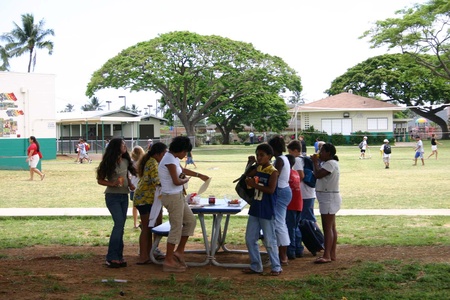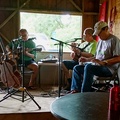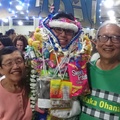In the second installment, " Is dressing fashionable not stylish? ", I touched on the change in words. I took up the topic of how inherited Japanese words have lost their original meaning and changed, and thought about it while imagining the lives of the Issei. I imagined that they worked hard every day after crossing the ocean, and saved up whatever little they had left over from the remittances they sent back to their homeland. I came up with the hypothesis that this is the reason for the change in the meaning of "fashionable."
I realized this while interacting with my Japanese friends in the current Japanese community in Hawaii. The couple M and L, who are like family to me, especially Ms. L, had experience as an elementary school teacher and immediately recognized my strong interest in English expressions.
This time, I would like to share my own experiences as a field worker.
In 1996, I got a job and started going to an elementary school in Hawaii every year. Whenever I had work in the US mainland, I would stop by Hawaii on my way home, no matter how short it was. I did this for about five years, and in 2001, I moved there for almost a year to intensively observe M-san's elementary school.
Compared to now, my English conversation skills were awful at that time, and I wonder how I managed to leave so many observation records. English was my favorite subject from junior high school onwards, and I had a lot of fun learning everything related to English. I was made to memorize 500 or 700 model sentences called "memory sentences," and I was trained to be fluent in both Japanese-English and English-Japanese translation. After I went on to graduate school, English became a tool for my studies and work, and I thought I was reasonably fluent in academic reading, writing and speaking.
But after living here for a long time, I realized that I was completely useless at casual conversation in everyday life. I always found myself looking around to follow the faces of people who were speaking. Some people say, "I can speak everyday English, but..." but everyday conversation is much more difficult than business English.
I met Mr. and Mrs. M and L in 2001, and soon after, Mr. L began to carefully correct my English expressions. Mr. L attended Japanese language school until the 8th grade, and as he visits Japan quite frequently, he understands the Japanese language and is familiar with Japanese culture. Therefore, he corrects me after understanding what I am doing wrong and how I am doing it, which makes it very easy to understand. 99% of my conversations with Mr. L are in English, but when I just can't find the right word, I try to speak in Japanese. For example, when I want to say "densho hato" (a carrier pigeon) but can only think of "dove," I am grateful that "hato" (a pigeon) is understood.
At that time, I was often told that I was speaking too fast. I was trying to speak at the same speed as I speak in Japanese. And I often stuttered. I was at a so-called "bottleneck" (not being able to immediately come up with the English sentence that matches what I want to say), so I was told that if I fixed that, I would improve.
But whenever I tried to join in on the conversation with the locals, I would miss the train, and even when I thought I had joined in, the whole trip would slow down as soon as I opened my mouth. This happened over and over again. And I often fell into self-loathing.
At such times, there was always a garage party at M-san and L-san's house, which seemed to coincide perfectly with the timing. The party was held in a cute little garage that was just big enough for two cars to fit side by side, and at the smallest, two families gathered with around 10 people, but on occasions such as M-san and L-san's birthday parties or Thanksgiving parties, it could be as many as 50 people.
I was invited to a small relatives' party and joined the conversation. All of the relatives were third and fourth generation Japanese. As always, I enjoyed M-san's cooking, felt the cool evening breeze, and enjoyed the pleasant conversation while drinking tea with fruits and desserts. Many topics about Japan came up. I tried to join in the conversation while listening carefully. Then I realized something new. Even though the tempo of local people's conversation is fast, their speaking speed is not. There is no need to speak at the same speed as the Japanese words come to your mind. In fact, it is better to speak English slowly. After I realized this, I stuttered less and was able to approach the conversation a little more calmly. Even when I interrupted, the overall speed did not slow down.
© 2017 Seiji Kawasaki









